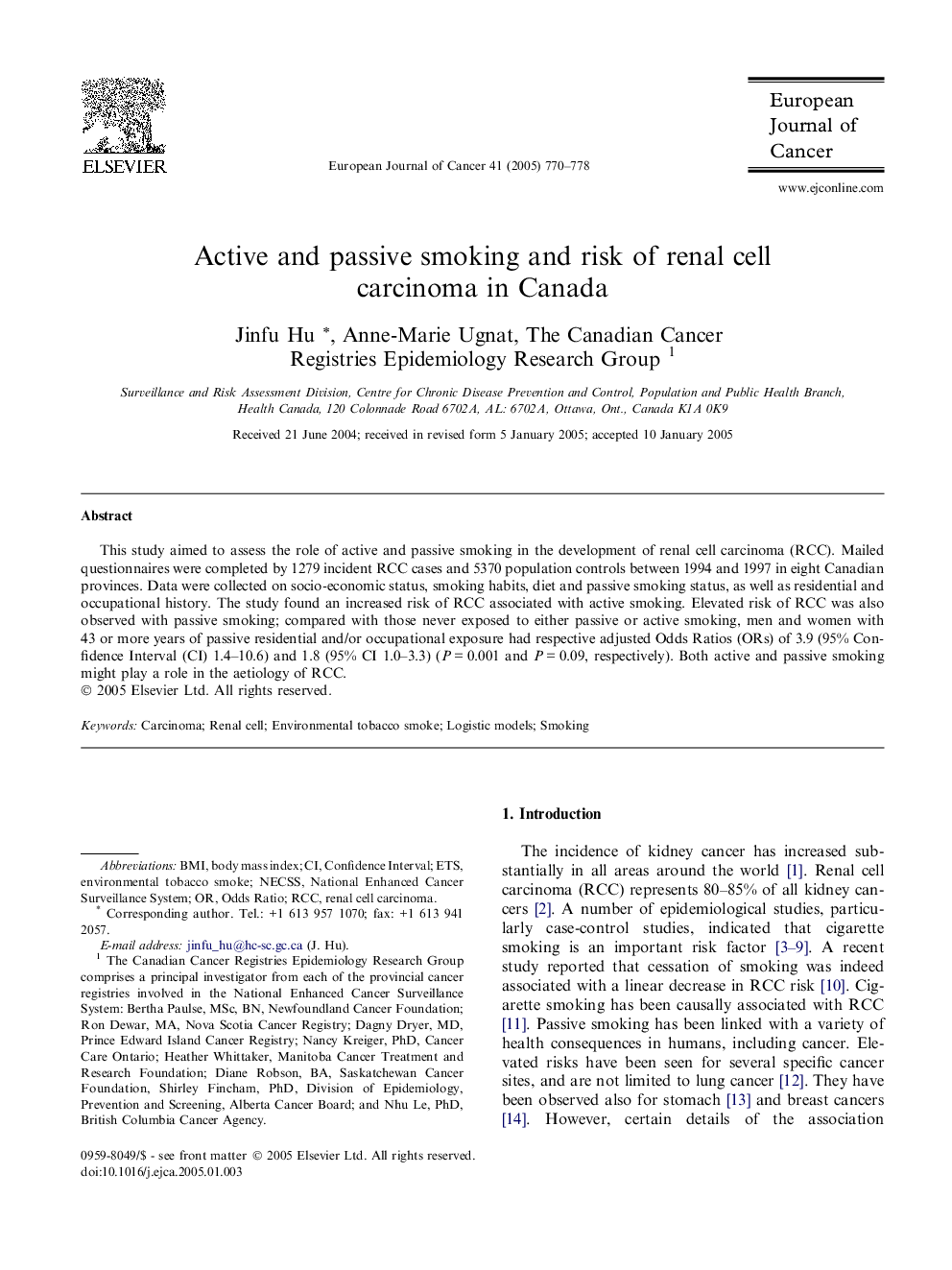| کد مقاله | کد نشریه | سال انتشار | مقاله انگلیسی | نسخه تمام متن |
|---|---|---|---|---|
| 9905848 | 1547306 | 2005 | 9 صفحه PDF | دانلود رایگان |
عنوان انگلیسی مقاله ISI
Active and passive smoking and risk of renal cell carcinoma in Canada
دانلود مقاله + سفارش ترجمه
دانلود مقاله ISI انگلیسی
رایگان برای ایرانیان
کلمات کلیدی
ETsRCCenvironmental tobacco smoke - دود سیگار محیطیRenal cell - سلول کلیهSmoking - سیگار کشیدنbody mass index - شاخص توده بدنBMI - شاخص توده بدنیconfidence interval - فاصله اطمینانlogistic models - مدل های لجستیکodds ratio - نسبت شانس هاRenal cell carcinoma - کارسینوم سلول کلیوی یا RCC Carcinoma - کارسینوما
موضوعات مرتبط
علوم زیستی و بیوفناوری
بیوشیمی، ژنتیک و زیست شناسی مولکولی
تحقیقات سرطان
پیش نمایش صفحه اول مقاله

چکیده انگلیسی
This study aimed to assess the role of active and passive smoking in the development of renal cell carcinoma (RCC). Mailed questionnaires were completed by 1279 incident RCC cases and 5370 population controls between 1994 and 1997 in eight Canadian provinces. Data were collected on socio-economic status, smoking habits, diet and passive smoking status, as well as residential and occupational history. The study found an increased risk of RCC associated with active smoking. Elevated risk of RCC was also observed with passive smoking; compared with those never exposed to either passive or active smoking, men and women with 43 or more years of passive residential and/or occupational exposure had respective adjusted Odds Ratios (ORs) of 3.9 (95% Confidence Interval (CI) 1.4-10.6) and 1.8 (95% CI 1.0-3.3) (PÂ =Â 0.001 and PÂ =Â 0.09, respectively). Both active and passive smoking might play a role in the aetiology of RCC.
ناشر
Database: Elsevier - ScienceDirect (ساینس دایرکت)
Journal: European Journal of Cancer - Volume 41, Issue 5, March 2005, Pages 770-778
Journal: European Journal of Cancer - Volume 41, Issue 5, March 2005, Pages 770-778
نویسندگان
Jinfu Hu, Anne-Marie Ugnat, The Canadian Cancer Registries Epidemiology Research Group The Canadian Cancer Registries Epidemiology Research Group,